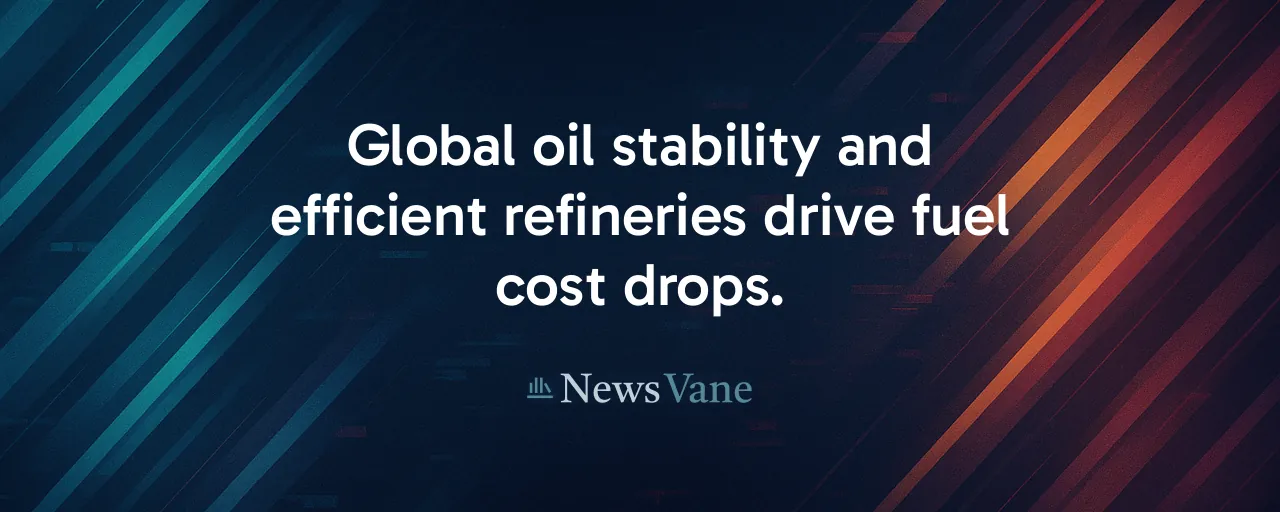A Welcome Break at the Pump
American drivers pulled up to gas stations this July with a rare smile. The national average price per gallon dipped to $3.15, the lowest for Independence Day since 2021. From Columbus, Ohio, to San Luis Obispo, California, pump prices fell by 30 to 45 cents compared to last year. For families planning summer road trips or workers commuting daily, the savings add up fast. A typical household could spend $450 less on fuel this year than in 2022, when prices soared past $5 in some states.
The White House spotlighted this trend, pointing to reports from AAA and GasBuddy showing declines in at least 20 states. Places like Mississippi and Texas even boasted averages below $2.75. The announcement framed the drop as a win for household budgets and a boost for economic growth, with more money left for groceries, school supplies, or small indulgences. But what's really behind this relief, and how long can it last?
Why Prices Are Falling Now
Several forces have aligned to ease the sting at the pump. Global crude oil prices, which heavily influence retail gasoline, have softened due to steady production from OPEC and its allies and slower demand growth in major economies. U.S. refineries, after completing spring maintenance, are running smoothly, churning out fuel without the bottlenecks that often spike costs. The Energy Information Administration notes that U.S. crude output, nearing 14 million barrels daily, has also helped stabilize supply.
These factors don't work in isolation. Lower crude prices reduce the cost of raw materials for refiners, while efficient operations keep distribution margins tight. For consumers, this translates to real savings. Academic research shows that a 10-cent drop in gas prices can lift disposable income by up to 0.2 percent, giving families and businesses a little more breathing room. However, the same studies warn that gasoline demand remains stubbornly inelastic, meaning drivers don't cut back much even when prices climb.
The Bigger Economic Picture
Cheap gas does more than pad wallets. It ripples through the economy, lowering costs for trucking companies, ride-share drivers, and logistics firms that deliver everything from produce to electronics. The result? Potentially lower prices for consumer goods, which could help tame inflation. Economists estimate that every 10-cent price drop saves U.S. drivers about $13 billion annually, money that often flows back into local businesses or savings accounts.
But there's a flip side. Affordable fuel can discourage investment in renewable energy and slow the shift to electric vehicles, which now account for 26 percent of global new car sales. For rural drivers and working-class households, cheap gas is a lifeline, especially in regions with limited public transit. Urban areas, however, might see air quality worsen if lower prices lead to more driving. Balancing these trade-offs requires careful planning, not just celebration of short-term gains.
Lessons From the Past
Gas price swings are nothing new. In 2022, prices spiked above $5 per gallon as post-pandemic travel surged and geopolitical tensions disrupted oil markets. By contrast, 2015 and 2009 saw presidents touting low prices as economic victories, much like today. Historical data from the Energy Information Administration shows that holiday prices last hit this level in 2021, at roughly $3.10. Economists consistently point out that presidents have limited direct control over pump prices, which are shaped by global markets and long-term policy.
What history does teach is the value of preparation. Strategic petroleum reserve releases have smoothed past price shocks, while investments in fuel efficiency have cut household fuel costs over decades. Policies that expand supply, like drilling leases, often take years to impact prices, while demand-side measures, such as transit or EV incentives, reshape consumption slowly. Both approaches have merits, but neither offers a quick fix.
Navigating a Volatile Future
Today's low prices are a relief, but volatility lurks. Global supply disruptions, refinery outages, or shifts in OPEC and its allies' strategy could push prices up again. Advocates for energy security argue that boosting domestic production and refining capacity can act as a buffer. Others, focused on climate goals, emphasize that long-term stability lies in reducing oil dependence through electric vehicles and public transit. Both sides agree that consumers deserve protection from wild price swings.
Practical steps could bridge these views. Upgrading refineries to cut emissions while boosting output is one option. Indexing fuel taxes to inflation, then funneling extra revenue into EV charging stations, could support both affordability and innovation. Transparent reporting on pipeline and refinery outages, as some experts propose, might also help markets adjust faster, keeping prices steadier.
A Path for Lasting Relief
The current dip in gas prices offers a moment to celebrate and reflect. Drivers across America are saving billions, and businesses are reaping the benefits of lower costs. Yet, the forces behind this relief, from global crude markets to refinery efficiency, are not guaranteed to last. Policymakers, industry leaders, and communities face a shared challenge: ensuring affordable fuel without sacrificing cleaner alternatives.
Solutions exist that don't pit one goal against another. Targeted investments in infrastructure, like cleaner refineries or expanded charging networks, can serve both drivers and the environment. Transparent markets and strategic reserves can cushion against shocks. By focusing on what unites stakeholders, from truckers to environmental advocates, America can build a system where relief at the pump is a feature, not a fluke.
As families hit the road this summer, the lower prices are a reminder of what's possible when markets, policy, and innovation align. The question now is whether leaders can seize this moment to make affordability a lasting reality, no matter what lies ahead.
